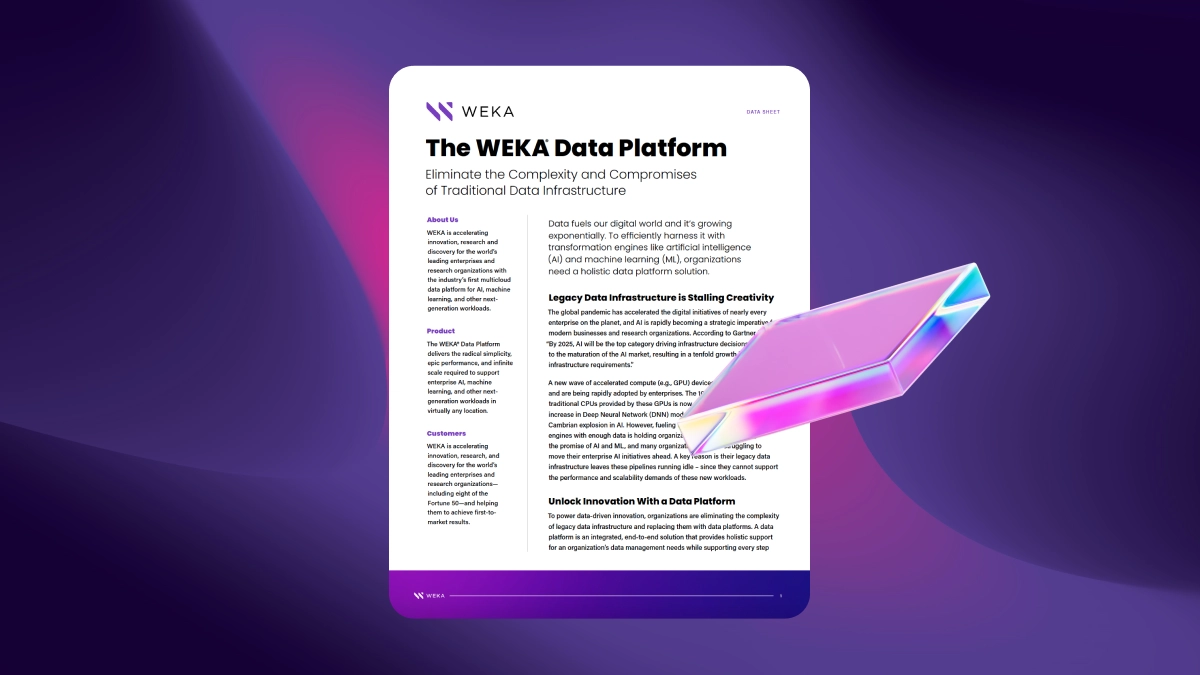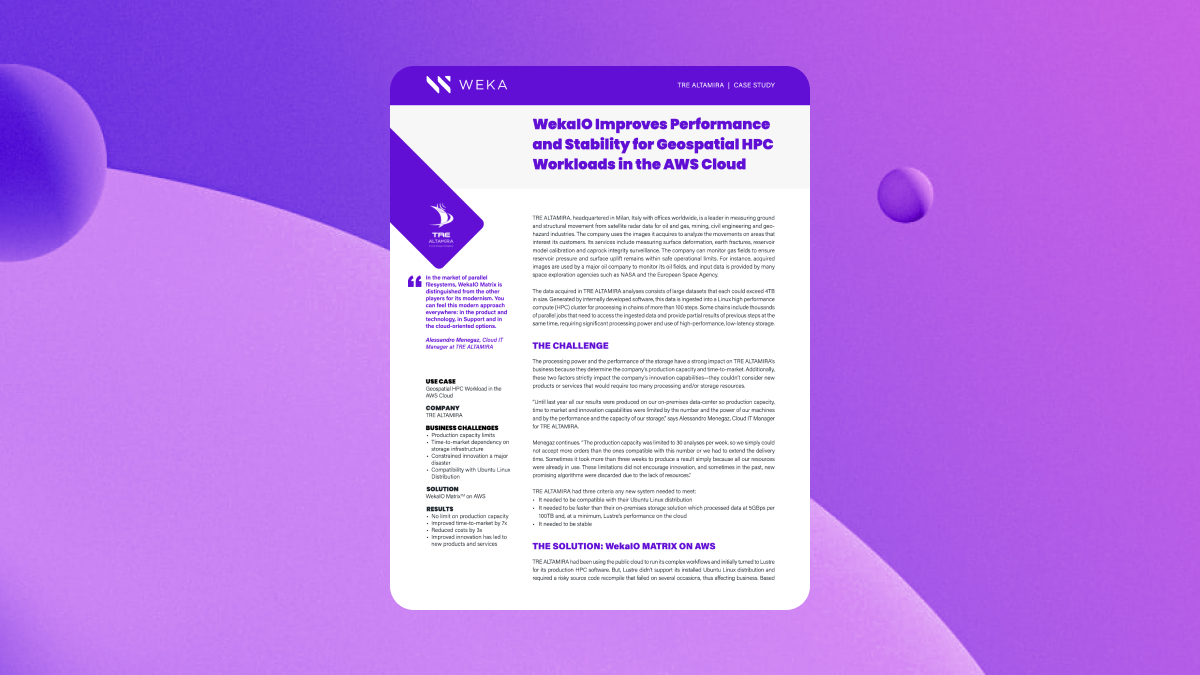Scale-Out Storage | Modern Data Storage Explained

Are you interested in scale-out storage? We explain what it is, how it works, and how this flexible solution can meet your data-intensive application needs.
What is scale-out storage?
Scale-out storage is an approach to storage where several smaller machines, or nodes, are connected and configured to act as one logical unit. When a scale-out system nears its storage limit, another node can easily be added to increase the storage capacity.
Scale-Out Storage, Scale-Up Storage, and Business Applications
“Scaling” is a common term used to describe positive infrastructural flexibility and growth potential in business and IT. Many of the technical products, services, and systems available both as cloud and on-premise solutions for enterprise businesses will usually invoke some scalability potential.
In terms of scalable storage infrastructure, scalability comes in several configurations made up of common components:
- Storage Media, typically represented through shelves of hard drives in server racks. If you’ve ever seen stock photos of data centers, you’ve probably seen this layout.
- Controllers, or specialized devices that connect the storage media to local area networks and, eventually, servers handling requests from inside or outside the organization. Controllers are responsible for managing data, requests for data, and data integrity in the storage system.
One of the most critical recognizable configurations is called “scale-up” storage. In scale-up storage (also known as scale-up NAS) systems, storage controllers manage several shelves of hard drives containing data. So long as there is available space in the drives, the controllers can manage saving and retrieval. Expanding the storage capacity involves adding more drives or more shelves to contain drives.
While this approach has served many businesses and data centers well, it does have its limitations. One of the primary limitations involves performance bottlenecks based on the controllers. Once the performance limit of the controllers is reached, the only way to expand the data center is to add an entirely new controller system. This leads to what is known as “sprawl,” where expanding data centers must incorporate increasingly complex sets of connected systems to maintain storage capacity and performance. As storage demands grow, performance tends to degrade, and expansion is an involved and inefficient process.
One of the solutions to this problem is a new configuration called “scale-out” storage. In a scale-out system, the emphasis is on streamlining the addition of new storage units as needed.
How is this accomplished? A scale-out system (also known as scale-out NAS) doesn’t rely on single controller units managing shelves of storage media. Instead, nodes composed of controllers and storage media are managed through a networked software approach (typically through NAS or cloud file systems).
The difference is in organization. In a scale-up solution, a controller manages a rack of storage media and will eventually run into performance issues. In scale-out solutions, controllers and storage media are replaced with clusters of servers that act as a single storage unit. These servers do not have to be stacked or connected other than through the local area network. Suppose the system needs to expand to accommodate more space. In that case, it simply adds a new server to the cluster rather than requiring an entire custom controller/storage array system.
What Are the Benefits and Advantages of Scale-Out Storage?
Because scalability is so essential for organizations, particularly those that rely on cloud infrastructure, the slightest advantages in performance can add up to massive benefits during day-to-day operations.
Some of the benefits of scale-out storage include the following:
- Cost-Effectiveness: Perhaps the most important benefit of scale-out storage is the reduction in operating costs. Because servers are connected as nodes that can be added or removed as needed from the network, you are relieved from fielding costly server racks with controllers every time you need additional storage. A traditional problem with scale-up systems—bursts of growth that lead administrators to install unneeded storage—is often averted.
- Flexibility: Both approaches give you a way to scale your storage, but scale-out systems provide more flexibility for how you scale. Adding and removing servers is quicker, and in some cases more granular, than scale-up systems.
- Maximize Hardware: Scale-out systems don’t call for specialized hardware in the same way that scale-up systems do. More efficient and powerful hardware can be used, and that hardware can be better utilized during scale-out operations.
What Are the Challenges of Implementing Scale-Out Storage?
While scale-out storage is a new and efficient way to implement large-scale data stores, it doesn’t come without challenges. Some of these challenges include the following:
- Applicability: There are some cases where scale-out storage isn’t as efficient as scale-up: in particular, when you can’t divide large files across different server nodes. There must be a significant investment in understanding the best configurations for your operation.
- Workloads: If you experience radical workload spikes rather than gradually increasing computational demands, then scale-up might work better than scale-out—if your storage needs remain relatively stable. If you find that you need rapidly expanding storage or distributed workloads over nodes, then scale-out might work better.
- Scaling Software vs. Storage: In scale-out systems, the storage scales, not the software attached to it. If data ingestion spikes, then nodes can choke on the data. Likewise, if a single software program manages your system, then the provisioning of computing resources and tasks can also slow performance.
While these challenges aren’t insurmountable, they do color how you approach storage strategies, particularly if you rely on NAS storage or distributed computing networks.
Scaling Your Storage for Modern Applications with WEKA
Whether your storage infrastructure uses scale-up or scale-out solutions, you probably want to leverage the best approach to power AI applications and heavy workloads. WEKA has the best ways to accommodate rapid scalability. We’ve implemented new dimensions of scalability that incorporate scale-out and scale-up to cloud systems for high-performance computing storage.
That’s just the beginning. We’ve developed cloud and hybrid systems purpose-built for high-performance computing in machine learning and AI, life sciences, and modern analytics.
Additional Resources
Scale-Up vs Scale-Out Data Center Architectures
Redefining Scale for Modern Storage
A Buyer’s Guide to Modern Storage





